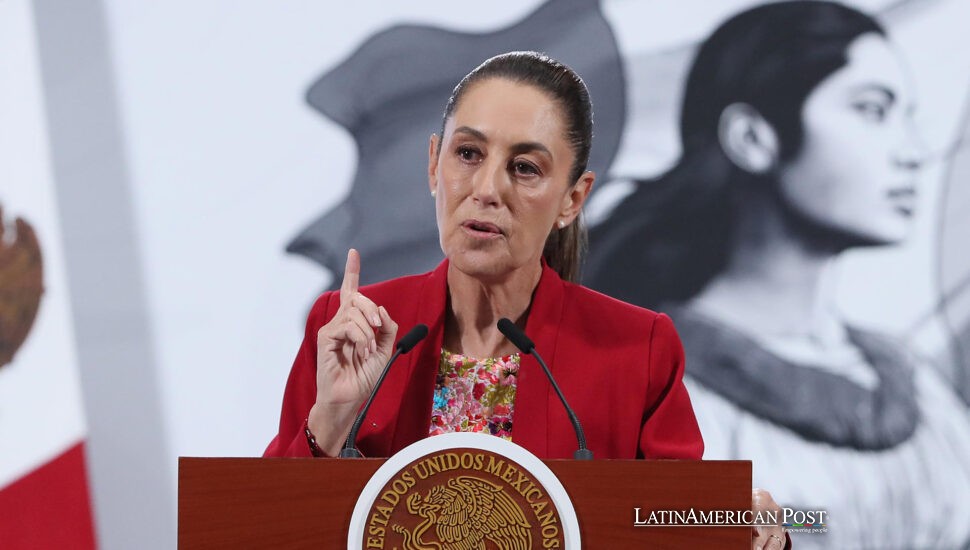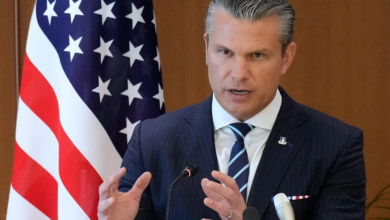Mexico’s Reckoning with Consent After the Assault on Its First Woman President

For years, Mexican women have marched for safety, shouted for justice, and mourned those lost to violence, and this week, that fight reached the presidential palace. A man’s hand—caught on video groping President Claudia Sheinbaum as she walked through Mexico City’s historic center—has forced the nation to confront what it still tolerates, and what it refuses to change.
A Violation in Plain Sight
It lasted only seconds. But the shock has outlived the moment. Sheinbaum was moving between meetings when a man wrapped an arm around her, touched her chest, and lunged for a kiss. She brushed him off; her staff stepped in. Yet the assault—captured and shared within minutes—ignited a national reckoning about consent, power, and women’s safety in public life.
“If this happens to the president, where does that leave all the young women in our country?” Sheinbaum asked the next day. “No man has the right to abuse women’s personal space.” Her words, carried by Reuters, cut through a culture that has long dismissed harassment as an inconvenience. This wasn’t some distant headline—it happened to the most visible woman in Mexico, in broad daylight, in front of cameras and citizens.
Sheinbaum, known for walking among crowds with minimal security, refused to pull back. “We have to be close to the people,” she told Reuters, a defiant statement of purpose—and vulnerability. The man, later identified in local media as Uriel Rivera, was arrested Tuesday night, according to a state security filing cited by Reuters. But the arrest is not the end of the story; it is the beginning of a deeper question: how safe is any woman, anywhere, if even the president’s space can be violated?
Access, Security, and the Politics of Proximity
After the video went viral, the first reaction was predictable: Where was her security? But focusing on her bodyguards misses the real indictment. If gendered violence can breach the cordon around the most protected woman in Mexico, what hope is there for those who walk to school, work late shifts, or sell fruit in the plaza?
Activists quoted by Reuters reminded the world of Mexico’s grim statistics. 821 femicides in 2024, and 501 more through September this year—numbers everyone knows understate the crisis. Behind each one lies the same pattern: ignored complaints, lazy investigations, impunity as policy.
Sheinbaum has tried to govern with empathy as much as authority, insisting that democracy must feel human, not distant. But proximity without protection can become a performance. By filing a criminal complaint, she drew a public boundary: closeness to the people must never mean surrendering bodily autonomy. Her gesture turned the symbolic into something visceral—a reminder that leadership includes saying “enough” when the cameras are rolling.

Media Ethics in the Viral Age
Then came the second violation. The newspaper Reforma published images of the groping, freezing the moment of assault on its front page. Sheinbaum condemned the move as “re-victimization,” invoking Mexico’s laws against digital violence. “The use of the image is also a crime,” she said, according to Reuters, demanding an apology and a new standard for how the press handles abuse.
Her government’s Women’s Ministry, created under her administration, echoed the demand—urging journalists to inform responsibly and avoid turning harm into content. The debate revealed a painful truth: when violence becomes viral, ethics move more slowly than clicks.
There is a line between evidence and exploitation. To replay the video endlessly is to make the assault perpetual—to force survivors to relive what they never consented to share. Responsible journalism doesn’t look away from violence; it refuses to commodify it. As Sheinbaum argued, transparency cannot justify humiliation. Her stance reframes media duty in a digital world: exposure without consent is another form of harm.
From Outrage to Law
Sheinbaum’s response went beyond outrage. “Sexual harassment should be a criminal offense, punishable by law,” she declared, ordering a review of state codes. Reuters reported that harassment remains a crime in only about half of Mexico’s states, leaving survivors trapped in a legal patchwork of geography and chance.
Ana Yeli Pérez, from the National Citizen Observatory on Femicide, told Reuters, “It’s reprehensible, it must be denounced—it’s symbolic of what women experience every day.” She’s right. If the country’s most powerful woman can be assaulted on camera, then all the old excuses—she was alone, she asked for it, she should’ve known better—collapse in a heap of national shame.
To fix this, anger must become architecture. Mexico needs one standard, not thirty-two. It requires trained police, funded shelters, survivor-centered protocols, and cultural campaigns that treat consent as a civic duty, not moral suggestion. Machismo is not tradition—it is harm repackaged as culture.
Sheinbaum’s promise to remain close to her citizens still matters. A democracy cannot survive if its leaders hide behind armored glass. But a democracy also fails if women—any women—cannot walk its streets without fear.
By filing charges, condemning the voyeurism of viral media, and demanding uniform laws, Sheinbaum has done what leaders are supposed to do: turn personal violation into public reform.
Because this moment is no longer just about a president—it’s about every woman who has been touched, grabbed, or silenced and told to move on.
If Mexico is to claim progress, it must prove it where it counts: in how safe the next woman feels when she dares to take up space, to lead, to walk freely under her own flag.
Also Read: Argentina’s Painful Reforms Are Paying Off — and Latin American Voters Are Taking Notice





